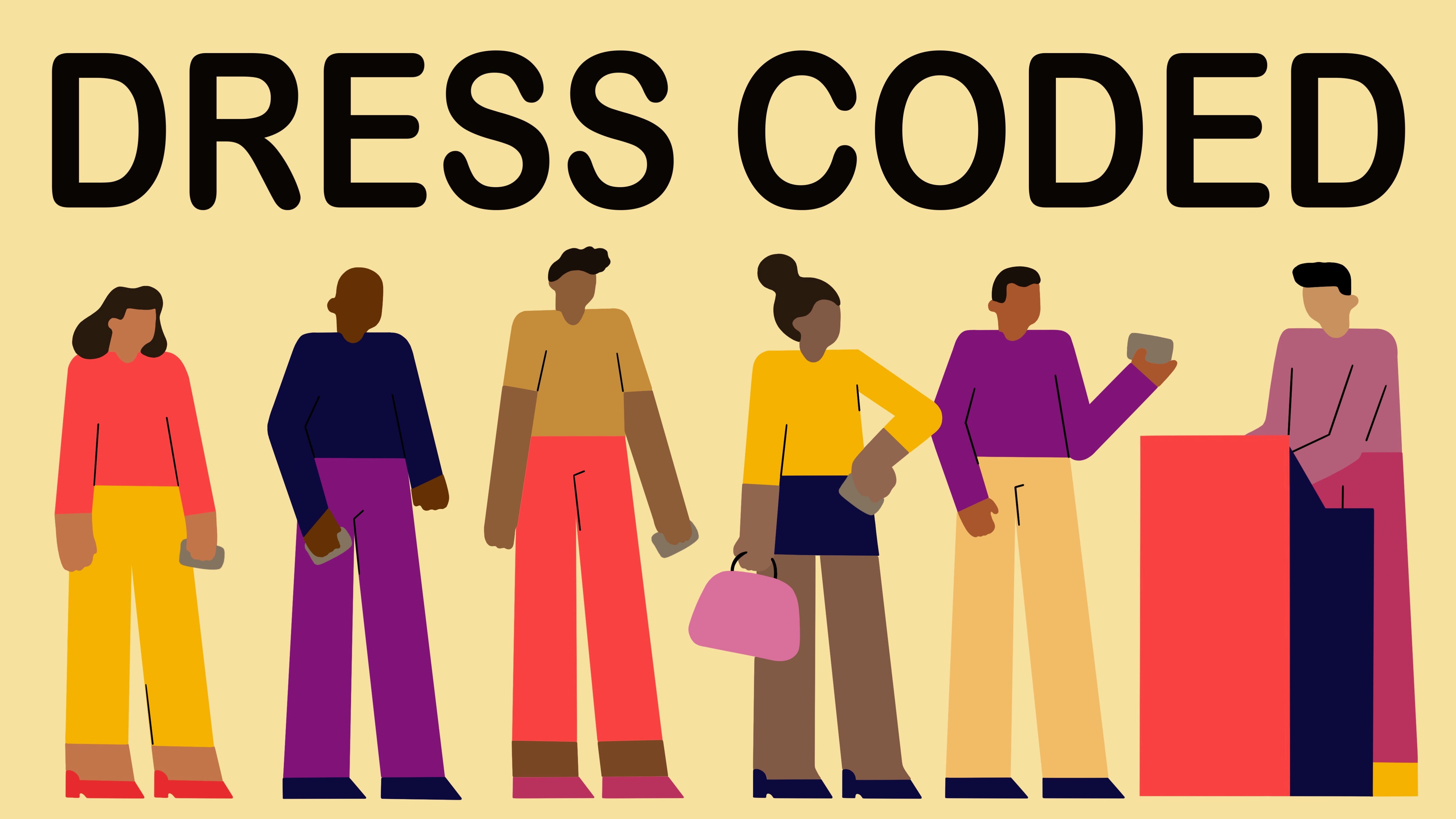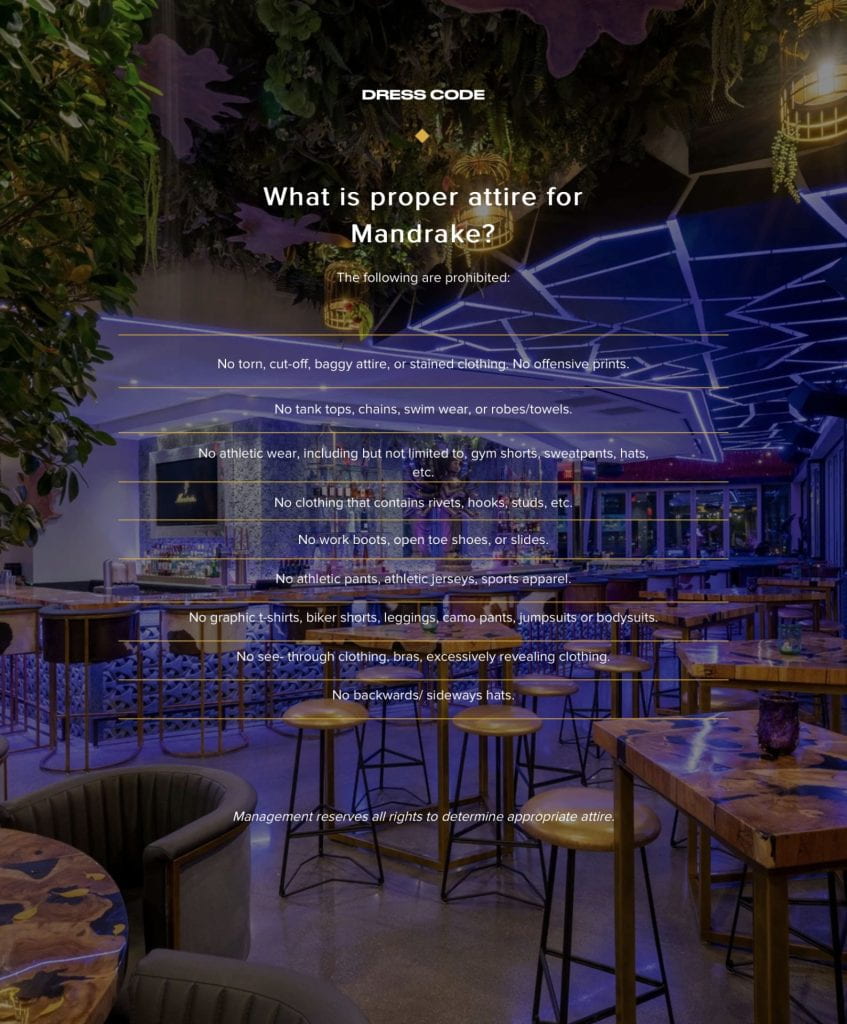
Derek Moore and a friend had just finished seeing a Broadway show downtown at the Ohio Theatre last spring when they decided to walk to an off-campus bar to enjoy a meal.
Moore, vice president of the Undergraduate Student Government and fourth-year in information systems, and his friend were waiting in line to be seated at TownHall, a restaurant and bar located in the Short North, when they were stopped at the door by a security guard.
Moore said the security guard said to him and him alone “I need you to lift up your shirt.”
Moore said after lifting his shirt in front of strangers, the security guard said, “You guys can’t come in, you guys need to leave.” When Moore asked why, the security guard said, ”Because I can see your underwear line,” Moore said.
Moore said he stood there, trying to make sense of the situation because the security guard asked him to lift up his shirt, which was the only reason his underwear line was visible.
“It just didn’t make any sense and was just, like, very humiliating,” Moore said. “But I did end up walking away, and I just felt so disgusted afterwards and quite frankly embarrassed for things I probably shouldn’t be embarrassed for.”

Undergraduate Student Government Vice President Derek Moore. Credit: Zachary Rilley | Photo Editor
After reflecting on the situation and having a conversation with his mother, Moore said he came to the conclusion that it was about his race.
“I am a Black person, so for me I didn’t feel like there wasn’t a coincidence there and that it was intentional,” Moore said.
Interviews and polls with students conducted by The Lantern show these practices are not uncommon and have had lasting impacts on students of color, more specifically the Black student body.
Through a poll conducted in the Black Ohio State GroupMe chat, just over half of the 62 respondents said they have either experienced this form of discrimination, witnessed it or know someone who has experienced it.
A poll conducted on The Lantern’s Twitter account showed out of 155 respondents, just over 1 in 10 people said to have been turned away from off-campus bars for unjustified reasons.
The statistics note that a significant number of students are aware of this issue, especially in the GroupMe poll, in which the target audience was Black students.


Two other students, Amani Samuels, a fourth-year in international studies, and Tahj Linton, a fourth-year in psychology, spoke about experiencing or witnessing situations in which they said campus-area establishments — TownHall and Big Bar — have used their dress codes to decline entrance to Black customers.
“All my friends of color either have a firsthand story, or a story of someone close to them or a mutual friend of theirs that has experienced some sort of racial discrimination, especially Black people,” Samuels said.
Businesses named within this story did not return repeated requests for comment.
After sending multiple emails to TownHall, The Lantern received a response that it was willing to give a statement, but after repeated attempts to further contact TownHall, the establishment didn’t provide one.
Averi Frost, executive director of the Central Ohio African American Chamber of Commerce, an organization that advocates and provides resources for Black-owned businesses in the central Ohio area, said by law, establishments can’t legally say only certain individuals are welcome, so they find other means to accomplish the same thing
“The dress code policy is just another mutation of segregation-type policies in my opinion, where the words have to change because of law, where you can’t just discriminate against people, so you have to find failed ways to insinuate and control who is in your place of business,” Frost said.
Some establishments, like TownHall and Big Bar, do not have a dress code listed on a website or social media platform.
Samuels encouraged others to look at Mandrake, a rooftop bar in the Short North, and its extensive dress code policy which includes rules on items more heavily worn by the Black community — such as bans on baggy clothes, chains, athletic wear, backwards or sideways hats, work boots, tank tops and more.

Moore said that he was too emotionally exhausted to handle the situation at the time, so his mother called TownHall on his behalf.
Moore said when his mother called about his experience, the TownHall representative said the establishment has these dress codes to keep its guests safe due to shootings in the past. The Lantern was unable to confirm any past shootings at TownHall.
“But the main question is like, you’re protecting your guest from who?” Moore said. “Who does that dress code actually eliminate? You turned me away, and I was no threat, so like who is it?”
Moore said he believes there should be more awareness of the discriminatory practices, and action from Columbus’ local government could help bring about change.
“I think beyond that, taking a look or just maybe advocating with our local government to see how these laws permit people to create such specific dress codes that can eliminate groups of people, and it’s like we can almost say, ‘OK we can’t say Black people aren’t allowed, but we can go pinpoint everything a Black person would wear and throw it on the list,’” Moore said.
Moore said the night he was dismissed from TownHall, he went to bed without eating anything at all.
“Those things linger, those moments are small, but they really add up in scope over time,” Moore said.
In regards to the poll conducted in the Black Ohio State GroupMe chat, 6.5 percent of students in the poll experienced discrimination through dress code, 20.9 percent witnessed it happen to someone else and 25.8 percent know someone who has experienced it. The remaining 46.8 percent were unaware of this happening.
According to the poll conducted by The Lantern’s Twitter account, 14 percent of students in the poll experienced discrimination through dress code, 9 percent witnessed it happen to someone else and 17 percent know someone who has experienced it. The remaining 60 percent were unaware of this happening.
Tahj Linton
Linton said he would see bouncers at TownHall let in a White person with ripped jeans or with low-hanging pants, but they would often ask Black men to lift up their shirts and deny them entry if their underwear was showing.
Linton said there needs to be more accountability for what is happening at these establishments and Ohio State should apply more pressure by finding ways to give students a stronger voice through university support.
”I think this is a part of the solution, to create more awareness even though people sort of know what’s happening but to give sort of targeted guidelines on how to follow up when those situations occur to you or when you witness it,” Linton said.
University spokesperson Chris Booker said in an email Ohio State values diversity, equity and inclusion in response to minority students’ accounts of discrimination at off-campus bars.
“The university recognizes and works against discrimination and harassment that too many in our communities and throughout the nation and world are still experiencing today,” Booker said.
Linton said he constantly battles the decision of whether or not to continue going to these establishments he feels discriminate against other Black people. There are other factors Black students would then have to consider by choosing other locations, he said. If students choose to go out downtown, they would be paying more money because the discounted Lyft pass for students does not extend that far.
“Do I even want to be here in the first place knowing their values and how they treat other people of the same skin color as me or other minority people in general?” Linton said.
Amani Samuels
For Samuels, it all started freshman year when she said she saw Black men being physically and verbally intimidated by White bouncers at establishments like Big Bar.
“Consistently, every time a Black man walked up, you’re going to see something happen,” Samuels said.
Samuels said the most personal and impactful moment of discrimination she has experienced occurred at TownHall going into her fourth year at Ohio State.
She and her friends were enjoying themselves at TownHall on Juneteenth this year, a federal holiday in celebration of the official end to slavery when slaves in Galveston, Texas, were told they were free 2.5 years after the signing of the Emancipation Proclamation.
They were sitting at the outside balcony area near the entrance and saw a couple — one Black woman and one white woman — walk up.
Samuels said there was probably an inch of the Black woman’s underwear showing, and the bouncer denied her entry. The woman pulled up her pants, apologized and said she didn’t notice her pants were low, Samuels said the bouncer still told the woman, “No, you got to get out of here, we’re not letting you in.”
Samuels said she and her group of friends jumped in and said, “She pulled up her pants, why aren’t you letting her in?”
Samuels said the bouncer went on to say, “I know her type, as soon as that type of person goes inside they’re going to pull their pants right back down, like no.”
Samuels and her party were then kicked out by the head of security after trying to defend her.

Townhall is a popular Short North destination for many Ohio State students. Credit: Zachary Rilley | Photo Editor
The Lantern has tried to repeatedly contact these establishments for comment via email and/or phone call, but either did not receive a response or the businesses declined to comment.
Each establishment was contacted three or more times through email. Big Bar and Mandrake were also contacted via phone call. Mandrake said over the phone that they would not be providing a statement; however, Big Bar did not answer the phone or respond to a voicemail left by The Lantern.
The Ohio Restaurant Association declined to comment.
J. Averi Frost
Frost said there is no other reason for a bar to have such strict dress codes other than to exclude people, and she encourages individuals to go to locations that are supportive and progressive rather than those that discriminate against people of color.
“The strictness with some of these things that are literally liquor and alcohol establishments that are only doing dance parties and stuff, I’m not quite sure what they’re trying to achieve,” Frost said
Frost said she has seen discrimination through dress code policies firsthand, which for her signifies the importance and need for more Black-owned businesses/spaces.
Moore said he condemns any type of discriminatory behavior toward people of his community and that the safety of students on and off campus is imperative.
“I encourage any businesses in the Short North who may consider using these discriminatory practices in the future, to rethink that decision,” Moore said. “The Ohio State University makes up a large portion of our local economy, including the Short North, and our safety will not be compromised. We will ensure there is a safe place for every Buckeye to be included and protected.”
Written by: Patricia B. Miller Special Projects Reporter Arianna Smith
Illustration by: Design Editor Abby Fricke
Graphics by: Managing Editor for Design Athena Markowski
Photos by: Photo Editor Zachary Rilley


